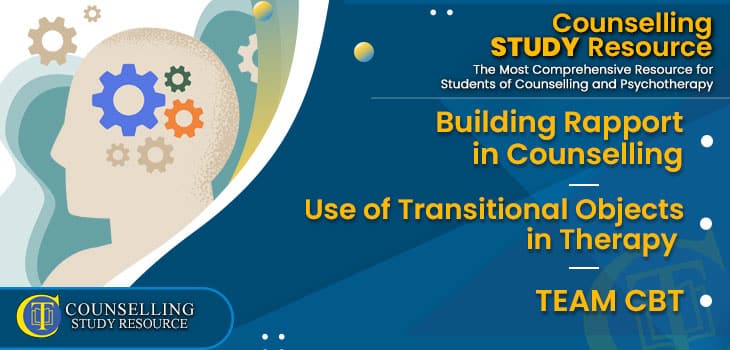See Counselling Skills Used in Real Sessions by Qualified Therapist
Real Sessions – Real Presentations – Real Skills
Gain the competence and confidence to use counselling techniques effectively!

In Episode 256 of the Counselling Tutor Podcast, your hosts Rory Lees-Oakes and Ken Kelly are back with this week’s three topics:
Building Rapport
Building rapport is a vital part of the therapeutic relationship. Listen as Rory and Ken take us through some of the key aspects of rapport and rapport building:

Real Sessions – Real Presentations – Real Skills
Gain the competence and confidence to use counselling techniques effectively!
I’m sure anyone listening can identify at least one object that you have, or have had, that worked as a transitional object.
The key points of this section include:

On-demand access to a rich lecture library covering theory, skills, and professional development for counselling students—Mapped to the UK awarding body criteria
“The Student Library has been BRILLIANT, I can’t recommend it enough!
It has been a lifeline in helping me prepare for practice and my first clients. If you’re considering it, go-for-it, it’s absolutely worth it!”
Kelly – Graduated and now in practice.
In this week’s ‘Practice Matters’, Rory speaks with Sean Connolly about TEAM CBT.
The main points of this discussion include:
Building Rapport

Get on-demand Certified CPD that is implementable in your practice
